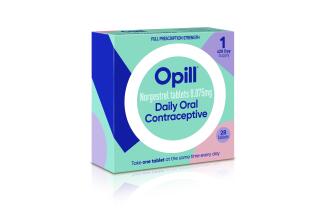Seasonale: the Pill, but with a difference
- Share via
For decades, oral contraceptives have been referred to collectively as the Pill. Unfortunately, use of that term has led many women to regard all of these products -- there are more than 50 -- as essentially the same. While all the products are equally effective at preventing pregnancy, they differ significantly in many other respects, including the way individuals react to them.
The newest pill, Seasonale, which received Food and Drug Administration approval about three months ago, is unique. Although the hormones in Seasonale are similar to those in other oral contraceptives, they are delivered in an unconventional way: Active hormones are taken every day for 12 weeks, followed by a week of inactive pills. (Traditional oral contraceptives use a 28-day cycle, with three weeks of active pills and one week of inactive.)
The supposed advantage of this new contraceptive is that menstrual periods occur less frequently -- every three months instead of every four weeks with the other products. But there is a downside: Women who use Seasonale appear to have more bleeding and spotting between their expected menstrual periods than women using traditional oral contraceptives.
Studies of Seasonale suggest that its risks of side effects are similar to those of conventional birth control pills, including an increased risk of blood clots, stroke and heart attack. It’s entirely possible, however, that more problems could be discovered after years of use by large numbers of women.
Even among traditional oral contraceptives, there are significant differences. Although they are all highly effective at preventing pregnancy and contain the same two general categories of hormones, progestins and estrogens, the specific hormones can vary from pill to pill. Ortho-Novum 7/7/7, for example, contains norethindrone, a progestin; Brevicon contains ethynodiol diacetate; and Triphasil contains levonorgestrel.
Progestins developed during the last decade, such as desogestrel (Apri, Cyclessa, Desogen, Mircette) and norgestimate (Ortho-Cyclen, Ortho Tri-Cyclen, Sprintec), are associated with a lower risk of side effects, such as acne and weight gain. They’re also less likely to cause significant elevation in blood pressure or cholesterol levels. The progestin drospirenone (Yasmin) works as a mild diuretic and may benefit women who experience fluid retention and bloating.
The amount of each hormone can also differ from one pill to another. Most women are started on “low-dose” pills, which contain 0.2 to 0.35 milligram of estrogen. Pills containing 0.5 milligram of estrogen are also available but are typically reserved for use in women who experience breakthrough bleeding at the lower doses or who have other medical reasons for needing a higher dose. The amount of progestin in each pill generally falls below 3 milligrams. The lowest doses are found in some multiphasic preparations (Cyclessa, Enpresse, Estrostep, Trilevlen, Triphasil), which gradually reduce the amount of progestin during the cycle.
All birth control pills today are considered safer than those that were first developed in the 1960s, which contained much larger amounts of hormones. High-dose pills fell out of favor when research revealed that they increased the risk of serious side effects, such as abnormal blood clotting.
The biggest difference between some pills -- and, to some women, the most important -- is price. A one-month supply of Ortho-Novum 135 sells for about $42, compared with Lo/Ovral ($40), Yasmin ($37) and Demulen 1/35 ($35). Some brands also have generic equivalents that sell for significantly less. For example, Brevicon sells for about $42, while a generic version costs about $28.
For most women, an inexpensive, low-dose oral contraceptive is the best choice to start with. If side effects occur, it’s usually worthwhile to try other birth control pills before giving up on this method of preventing pregnancy.
*
Dr. Valerie Ulene is a board-certified specialist in preventive medicine practicing in Los Angeles. The M.D. appears the first Monday of the month.





